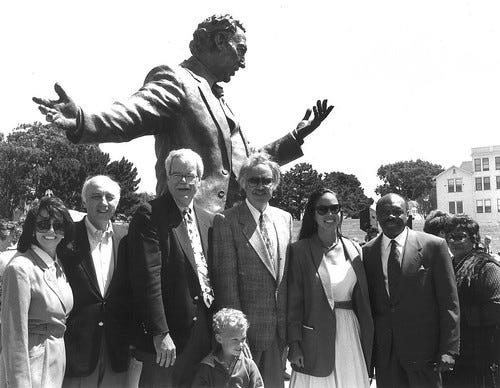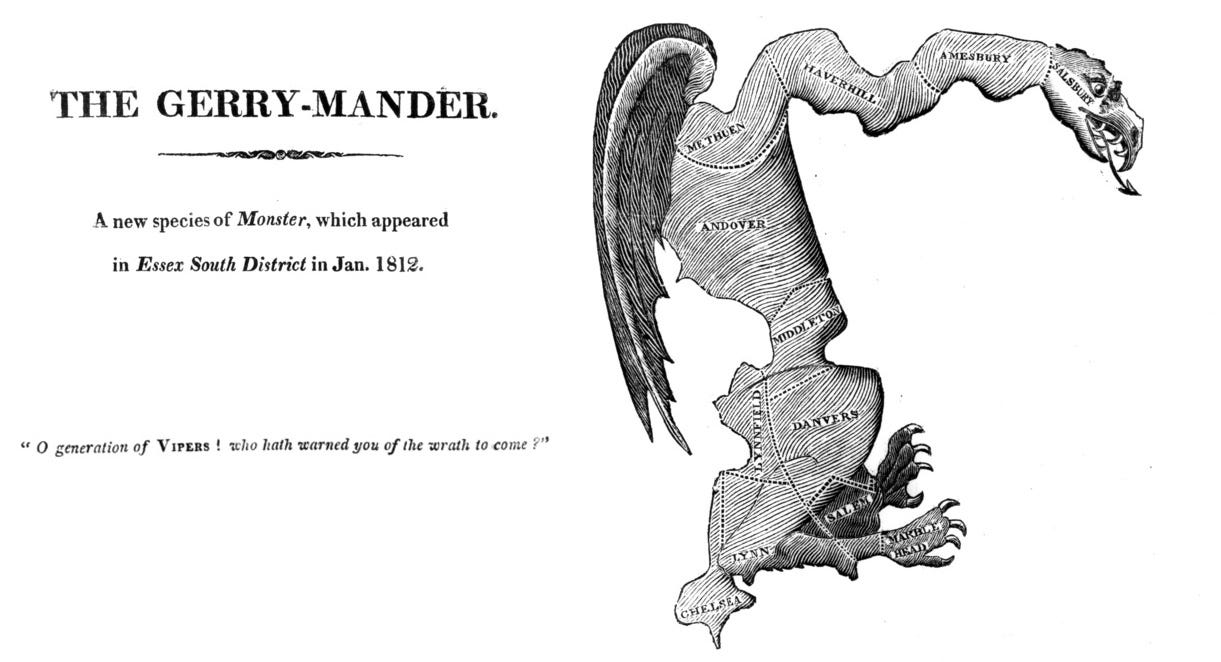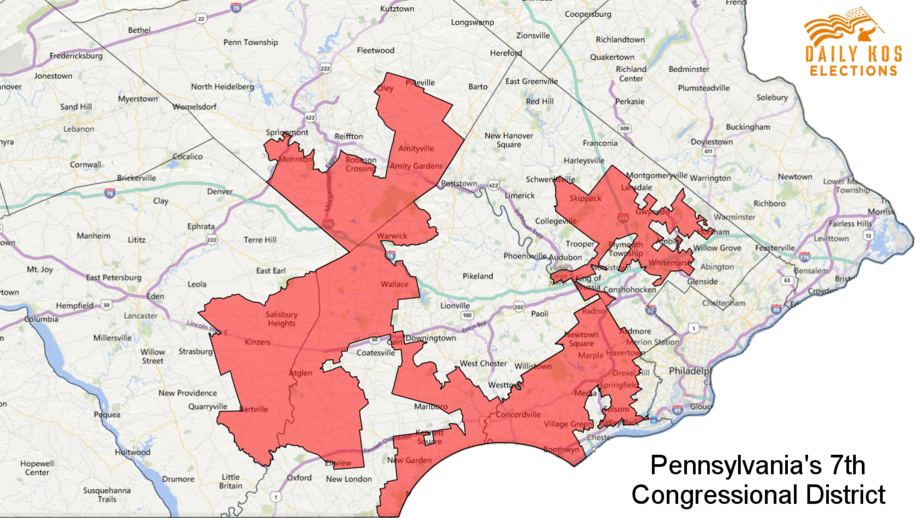Ricochet is the best place on the internet to discuss the issues of the day, either through commenting on posts or writing your own for our active and dynamic community in a fully moderated environment. In addition, the Ricochet Audio Network offers over 50 original podcasts with new episodes released every day.
 SCOTUS: The Next Big Case
SCOTUS: The Next Big Case
Unless you’re a long-time legislative redistricting activist or watcher, you’d be forgiven for not knowing who the late U.S. Rep. Phil Burton (D-CA) was.
Burton, a hard lefty and an intensely partisan Democrat, enjoyed encyclopedic knowledge of California geography and demographics. Elected to the California legislature in 1956, he was in charge of redistricting right after the 1960 census. In 1964, he was elected to the U.S. House from San Francisco. Along with this brother and fellow U.S. Rep. John Burton, he engineered subsequent drawings of California’s congressional lines to ensure our largest state’s delegation was solidly Democratic, at least until he passed away in 1983.

I’ll let fellow Substacker Mike Holme explain Burton’s “genius” in 1981, his final coup de grace:
In 1980, he masterminded a redistricting plan to keep Democratic seats safe with certain districts so outrageously gerrymandered to the extent that he called it “my contribution to modern art” (Devoe). The redistricting proved effective: despite winning only 49% of the vote in the 1982 House election, Democrats won 60% of California’s seats. There was also a personal element in this redistricting plan: he wanted to boot ultra-conservative Rep. John Rousselot (R-Calif.) out of office for recruiting a candidate who came close to defeating his brother, John Burton, in the 1980 election. Rousselot was shifted into a majority Latino district, the Democratic lean of which he couldn’t overcome in the 1982 midterms. Previously, California’s delegation had been evenly balanced, with 22 Democrats and 21 Republicans. The Democrats after the 1982 midterm held 28 seats, while Republicans held 17. This favorable redistricting helped shift the political power of the state to the Democrats, and Republicans have never been able to secure enough power to pay Burton’s ghost back for the 1980 redistricting.
Burton’s considerable legacy lives on via the people his political machine helped elect and the subsequent people those political powerhouses spawned. Burton’s contributions to “modern art” were never successfully challenged.
Of course, congressional redistricting has been an issue since 1812, when the legendary Governor and future Vice President, Elbridge Gerry, fashioned a Massachusetts congressional seat that resembled a salamander to consolidate Federalist voters in favor of his Democratic-Republican party. Thus the term “Gerry-mander.”

Repulsed by Gerrymandering, mainly since the 2000 census, nine states have instilled “bipartisan” independent commissions to draw lines, including California. Virginia and New York have “hybrid” systems. Six single-member states, like Wyoming, Alaska, and Delaware, don’t worry about it.

And redistricting remains an issue. Speaking of the 2010 census, Republicans sparked a kerfuffle when they drew their contribution to modern art with a new Seventh District in southeast Pennsylvania, where I lived. Then represented by U.S. Rep. Pat Meehan (R-PA), a GOP legislature and Governor (Tom Corbett) fashioned a seat referred to by one wag as a “three-headed dog.” The partisan 6-3 Democratic State Supreme Court (justices are elected in the Keystone State by party) eventually tossed out the map as a violation of the state’s Constitution just in time for the 2018 elections. Their handiwork handed Democrats four new seats, which happened to be the margin of Nancy Pelosi’s majority in the House. For now. So this stuff matters.
However, in 2019, the U.S. Supreme Court banned challenges in federal court to partisan gerrymanders. Chief Justice John Roberts, writing for the 5-4 majority, said, “We conclude that partisan gerrymandering claims present political questions beyond the reach of the federal courts.” But are independent redistricting commissions constitutional? Can legislatures delegate these constitutional powers?
Political party organizations led by Eric Holder on the Democratic side and the National Republican Redistricting Trust, co-led by former Secretary of State Mike Pompeo and former New Jersey Gov. Chris Christie, have engaged in hand-to-hand combat in several states following the 2020 census. It includes New York (the state Supreme Court tossed a horrific Democratic Gerrymander) and North Carolina, whose state Supreme Court rejected a Republican legislative map.
And that North Carolina map has found its way to the Supreme Court in Moore v. Harper. Timothy Moore is the Republican Speaker of the state House of Representatives. On its last day, the Supreme Court “granted cert” to the case, which will now be heard sometime after the Supreme Court launches its next term in October.
Having taken hits on gun control, abortion “rights,” and curbing federal bureaucrats, The Left is apoplectic. “An extreme version of the theory would shut down state courts’ ability to rein in partisan gerrymandering and protect voters’ rights in federal elections,” said Rick Hasen, a professor at UCLA Law,” told The Hill.
The question here is whether that pesky Constitution’s “Elections Clause” (Article 1, Section 4, Clause 1) means what it says: “The Times, Places and Manner of holding Elections for Senators and Representatives, shall be prescribed in each State by the Legislature thereof; but the Congress may at any time by Law make or alter such Regulations, except as to the Places of chusing Senators.” Of course, that was written before the 17th amendment established the direct election of U.S. Senators instead of by legislatures. A minor and irrelevant point.
But wait. There’s more.
North Carolina’s Senate President, Phil Berger, not to be left out, saw his case against the state’s chapter of the NAACP as the second of two consolidated cases, along with Moore v. Harper. This isn’t just a case about redistricting but speaks to voter identification laws and a broader issue explained here by the Washington Free Beacon:
Blue state judges and liberal bureaucrats caught flak for littering their states with drop-boxes and accepting mail-in ballots during the 2020 election without permission from lawmakers. The Supreme Court is poised to stop them from doing it again in 2024.
The justices announced Thursday that they will hear a case later this year involving the “independent state legislature theory,” which holds that state lawmakers alone control election procedures and redistricting. The news invigorated conservative groups who say bureaucratic tinkering with district lines and election laws is destroying public confidence in the political process.
Berger’s challenge goes to the implementation of the state’s recent constitutional amendment to require photographic voter identification. Democratic Gov. Roy Cooper is blocking legislation to implement it. This isn’t just about the states versus the federal government, but state legislatures versus state courts and executives.
Leftists, of course, think this means that legislators would be able to ignore or violate their state constitutions. I suspect the Supreme Court will address that, but state court interpretations of their constitutions and legislatures are what’s really in question. In North Carolina’s case, its Constitution calls for “free and fair” elections. On that basis, the partisan North Carolina State Supreme Court tossed out the legislature’s congressional map. Seems like a stretch.
There are lots on the line, including whether Congress can reprise efforts to nationalize our elections or even for the President to issue executive orders that, in effect, turn the federal apparatus into an adjunct of the Democratic National Committee.
During the pandemic election of 2020, we saw governors, state election apparatuses, and state courts rewrite election laws. Pennsylvania was especially egregious, authorizing privately-funded drop boxes and extended deadlines to receiving absentee ballots several days after the election, and more, without legislative approval.
The rule of law may be the bedrock of our constitutional republic, but truly free, fair, and secure elections are its capstone. And without that capstone, the entire arch of our government craters.
This is a big deal. Stay tuned. If the recent past is prologue, the Constitution’s comeback may continue.
Published in General



Why does political party have an effect on setting the boundaries for Congressional districts? What would happen in this process if the political parties did not exist?
What would boundaries look like if the people tasked to drawing them were denied demographics other than the raw number of people in any area?
The left will do what it always does which is to ignore the the law.
They want to save our democracy, that has no basis for existence, instead of our Constitution to which the elected Leftists swore an oath to uphold. When the Republicans get control of the House they should impeach every Leftist who acts overtly in violation of that oath.
No one would be denied demographic or other information. The question is whether the court would leave the door open to the crazy districts created by Phil Burton or the one 11 years ago in PA. Some state constitutions have “compactness” and “contiguous” requirements that respect political borders and jurisdictions. Those might hold if in the state constitution or state law.
Those people would have to find some proxy criterion to achieve their desired results, then.
Our largest state? By what metric? Geography or population?
One township, one vote.
We do the same. See Texas and Florida.
Shame on the Democrats for Illinois.
Thank goodness, the Courts stopped the terrible Democrat gerrymander of New York.